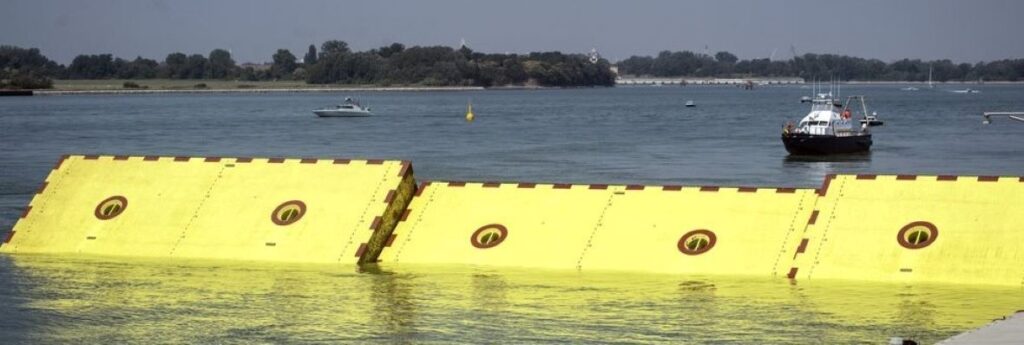Venice has conducted a trial run of its ambitious Moses anti-flood system of 78 inflatable barriers in hopes of protecting the lagoon city from increasingly devastating high tides.
Late last week, Premier Giuseppe Conte activated compressors to pump air into the bright yellow barriers, which then started rising from the sea to act as a kind of a dike-on-demand.
The project, riddled by corruption, was supposed to be working in 2011. Now the latest date is 2021, but Conte expressed hope it could be ready by this autumn. In November 2019, Venice suffered its worst flooding in more than 50 years.
The project’s name, Moses, recalls the Biblical figure who, the Old Testament recounts, parted the waters of the Red Sea. But it also is the Italian acronym for Experimental Electromechanical Modules.
The movable flood gates are attached by hinges to cement blocks on the seabed along three openings from the sea into the lagoon. After high-tide danger ceases, sea water is pumped into the gates to make them heavy so they can be lowered.
Inaugurated in 2003, the project was mired in corruption. In 2014, investigators revealed a system of bribes and kickbacks. Nearly €6 billion ($9.2 billion) have been poured into the planning and construction of the anti-flood system.
Environmentalists have opposed the project, afraid it will disturb the lagoon’s delicate ecology. At the test event, some of them rode in small boats near the site and waved protest banners, while police in speedboats cut swift paths among the protesters’ boats as tensions flared.
The protesters contend that because the world’s sea levels are rising in general, the movable barrier system will become obsolete as the Adriatic Sea’s level eventually rises to the point that waters will be higher than what the barriers were designed to hold back.
Conte praised the project, saying it was designed to safeguard Venice’s architectural, artistic and historical heritage.
Had Moses been operational last year, it could have been put to a dramatic test. Floodwaters on Nov. 12 invaded St. Mark’s Basilica and also poured into homes, hotels, stores and restaurants in the city, which lives off tourism. City officials estimated flood damage at around €1 billion euros ($1.54 billion).
The barriers are designed to protect Venice from tides as high as three metre. In the November flood, the tide surged to 1.87 metres.

